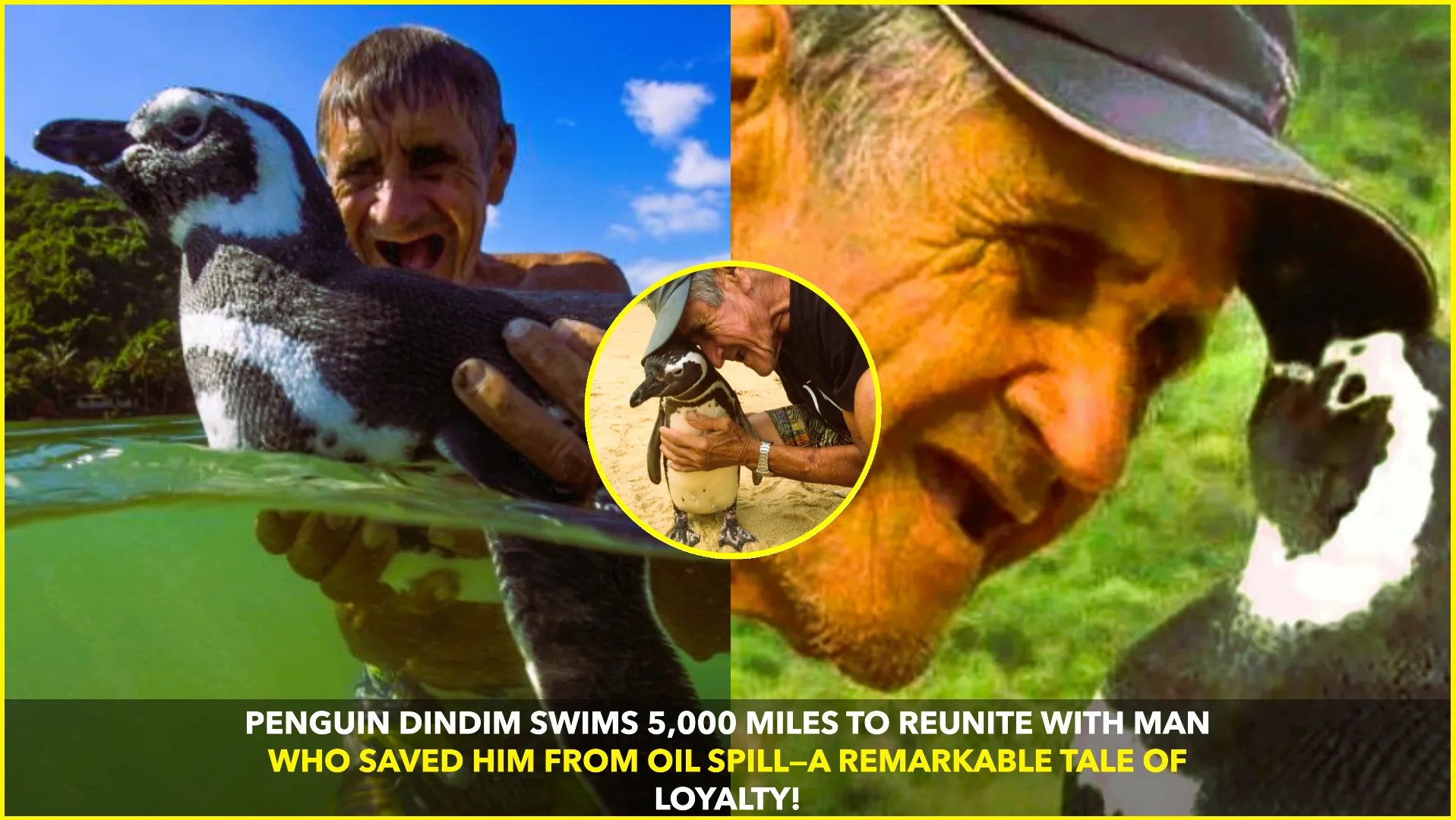In 2011, João Pereira de Souza—a former bricklayer turned part-time fisherman from Ilha Grande, Brazil—found a near-lifeless Magellanic penguin on the shore, coated in oil, dehydrated, and on the brink of death. He took the bird home, cleaned him, fed him, and gently nursed him back to health. João named him Dindim, and a deep bond began that would defy expectations ABC7 New York+1.
Dindim stayed with João for nearly a year, seeking comfort in the man’s home and routine. He learned to mimic a name that sounded like “João,” and would insist on companionship—sitting beside him on the sofa, showering with him, even pecking others who tried to approach him during his visitor periods Quartz+1.
When Dindim finally returned to the ocean, many thought he’d never come back. Remarkably, he did—and not just once. He returned year after year, making a migratory trek estimated at nearly 5,000 miles annually between Argentina (where Magellanic penguins breed) and João’s shore in Brazil.
Biologists note that Magellanic penguins typically migrate from Patagonia to the southern coast of Brazil in search of food, and many pass through João’s region following ocean currents and seasonal shifts. What makes Dindim extraordinary is that he specifically targets João’s home on Ilha Grande—a place no other penguin regards as permanent habitat Pew Charitable Trusts+2Wikipedia+2.
Oceanographer Hugo Gallo Neto of Ubatuba Aquarium confirmed through tagging and blood tests that the returning penguin was indeed Dindim himself. One year in the 2010s, Dindim spent eight months on the beach next to João and just four months at sea—remarkable for a species that typically stays at sea most of the time The Guardian+1.
This annual pilgrimage became a symbol of interspecies loyalty. João treated Dindim like a child, feeding him sardines, bathing him, and sharing quiet evenings. Dindim’s predictable annual return amazed not only locals but the broader conservation community. Many penguins never live past infancy—exposed to hazards like climate change, oil pollution, and fishing nets—but this one survived and returned, year after year, to the person who gave him a second chance at life.
Their story caught worldwide attention in 2016 and inspired the 2024 family-adventure film My Penguin Friend, starring Jean Reno and Adriana Barraza, which dramatizes the rescue and the unusual bond between man and bird Wikipedia+1.
João, now in his eighties, says the affection is mutual: “I love the penguin like he’s my own child, and I believe the penguin loves me.” Scientists suggest Dindim may view João and Ilha Grande as his adopted territory—or even social group—rather than returning to his original breeding grounds in Patagonia.
Despite the warmth of their friendship, Dindim stopped returning around 2016. At that point, he was about six years old and possibly settling into a colony where he bred for the first time. João acknowledges he may never see his friend again, but remains grateful for the connection that changed both their lives The Guardian+1.
Why This Story Matters
- Unusual animal loyalty: While migratory returns are common in penguins, the precision and emotional nature of Dindim’s journey stands out. He wasn’t just migrating—he was returning to a person Pew Charitable Trusts+1.
- Wildlife rescue impact: The story highlights how a single act of kindness in wildlife rescue can resonate for years, forming an unexpected life bond.
- Conservation messaging: Magellanic penguins face major threats from pollution, overfishing, habitat loss, and warming seas. Dindim’s tale underscores the importance of marine protection and empathy toward all creatures Pew Charitable Trusts+1.
This touching saga of a fisherman and a penguin reminds us that empathy and care can bridge species—and inspire hope across oceans and generations.










